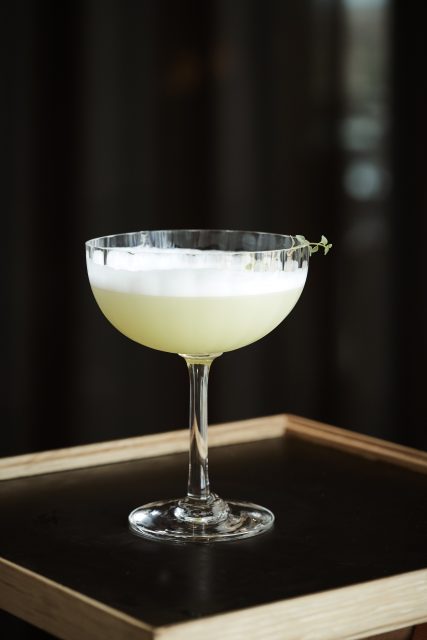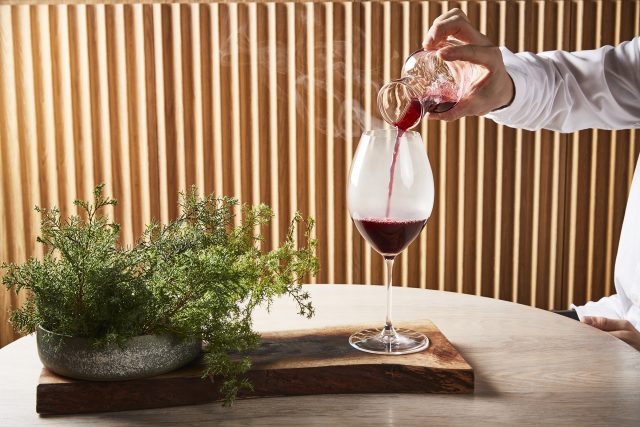This website uses cookies so that we can provide you with the best user experience possible. Cookie information is stored in your browser and performs functions such as recognising you when you return to our website and helping our team to understand which sections of the website you find most interesting and useful.
db Meets: Søren Ørbek Ledet of Geranium
As wine director and co-owner of Copenhagen’s lauded Geranium restaurant, which reopened this week, Søren Ørbek Ledet’s skill at dovetailing wine and food was never in doubt, but his attention to non-alcoholic choices is remarkable, discovers Douglas Blyde.

How have you have worked on the juice-led pairings at Geranium, drawing on your background as a chef?
In today’s world, there are many reasons why a lot of guests choose not to drink alcohol. They might be pregnant or chose to abstain for various reasons, or maybe they are under the legal drinking age.
And sometimes guests choose not to drink because they have had too many tasting menus over a short period and need a break from alcohol. Many times, they just want to try something different.

The Geranium juice pairing has always had a special place in our heart. We were among the first in Copenhagen to offer one because we wanted to give each guest a great experience regardless of their drink choices. I think the key is to devote as much time and thought to the juice pairings as we do with our wine selections.
What are the processes that you undertake in imagining then crafting and sustaining a pairing, please, and how are the drinks presented to guests?
When we create our juice pairings there are many factors we consider. We look for high peaks of structure and texture in the dish to determine how to best compliment or accentuate the flavour profiles. We look at factors such as:
- The savory and sweetness profile to decide whether to use a vegetable based, tea based or fruit-based pairing.
- The aromatic profile is very important. As a former chef, I know classic flavours: what works and what doesn’t. For example, if a dish includes celeriac and thyme, then an apple-based pairing could be a good option.
A dish with oyster typically needs some citrus. It could be lemon, lime, orange or something which emulates the acidity in citrus fruits such as sea buckthorn or passion fruit. Highlighting the herbs used in a dish with a familiar flavour in the juice can add a lot as well.
- The acidity, bitter, and sweetness levels are crucial to identify in order to make sure there is a balance in the juice and the pairing.
- The density and fat levels of a dish are also important and we often work with temperature, adding drops of oil in our pairings to compensate for textural differences. Shake a juice over ice or add drops of an infused oil and you can change the texture and make the overall mouthfeel complete.
- Another technique is to roast, burn or smoke an element. This is common practice in the kitchen and when we do this flavours that we can add to the juices to bridge better between the dish and the pairing.
- Like wine, we also address the progression of the juice pairing to make sure that we do not serve too many juices with a similar profile.
- Glassware and preparation of the glass is important, too, in terms of acidity and sweetness and where the liquid first comes into contact in the mouth. Also, preparing, shaking or burning pine in front of the guests provides a great sensory experience visually and in terms of aroma.
All of these factors are added to the equation when preparing our juices.

And how are these received?
We get really good feedback from most of our guests who choose a juice pairing. The two juices, which receive the most praise are the shaken Green Apple juice with Lemon Thyme Oil and the Blueberry and Blackcurrant with roasted Woodchips and Burned Pine.
The latter pairs brilliantly with grilled venison, pear and pickled pine. The way the flavours complement each other is at thing of beauty in itself. Additionally, the burned flavour captures the grilled flavour in the venison.
Meanwhile, the Green Apple juice with Lemon Thyme Oil pairs beautifully with salted scallops, red beetroot and horseradish.
Apple with horseradish and beetroot is a classic combination and the oil gives texture and acidity to the juice, which then creates balance with the buttery texture of the salted scallops.
Have your juice pairings changed your customers’ perceptions of non-alcoholic drinks?
I think when someone drinks a non-alcoholic pairing which is well done it awakens an emotion and a desire to try them more and more often. While it doesn’t really replace wine for someone who is in love with wine, it can definitely provide a very pleasant break and alternative; I know it is like this for me.
I loved the chic yet cosseting space that barely nodded to its location; was the only window facing the stadium in the kitchen, after all?
As with many other restaurants around the world, we sometimes change and renew the appearance of the restaurant as it and as we evolve. And yes, Geranium is in a unique location, but it is not about soccer/football, but about the special views of nature on the other side of the stadium!
This is the reason why you can only see the stadium from our kitchens. Today, Geranium is much lighter and brighter than when we first began, in some respects it is a reflection of our personal change, as well as our view of the future…
For more information on Geranium click here.

